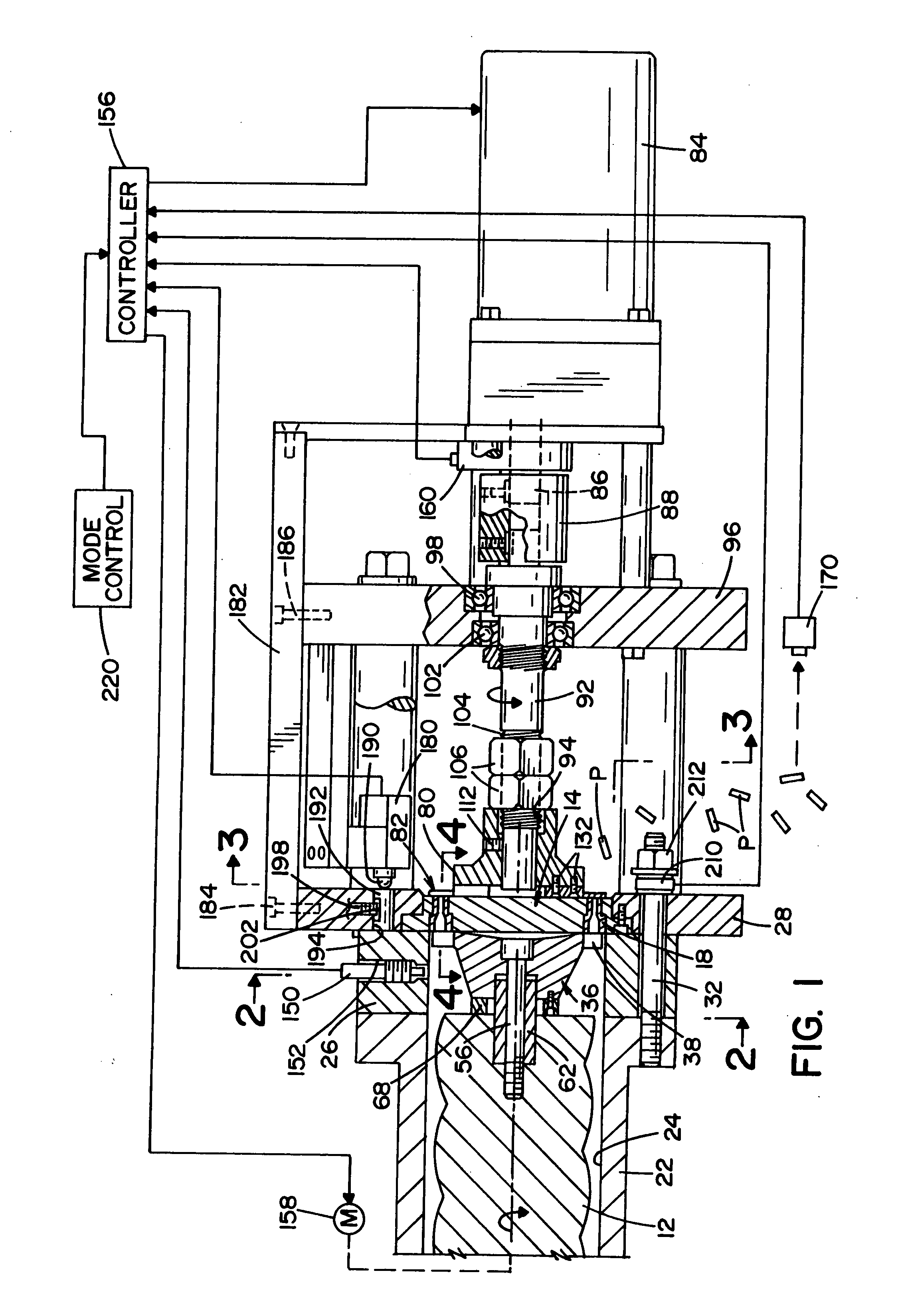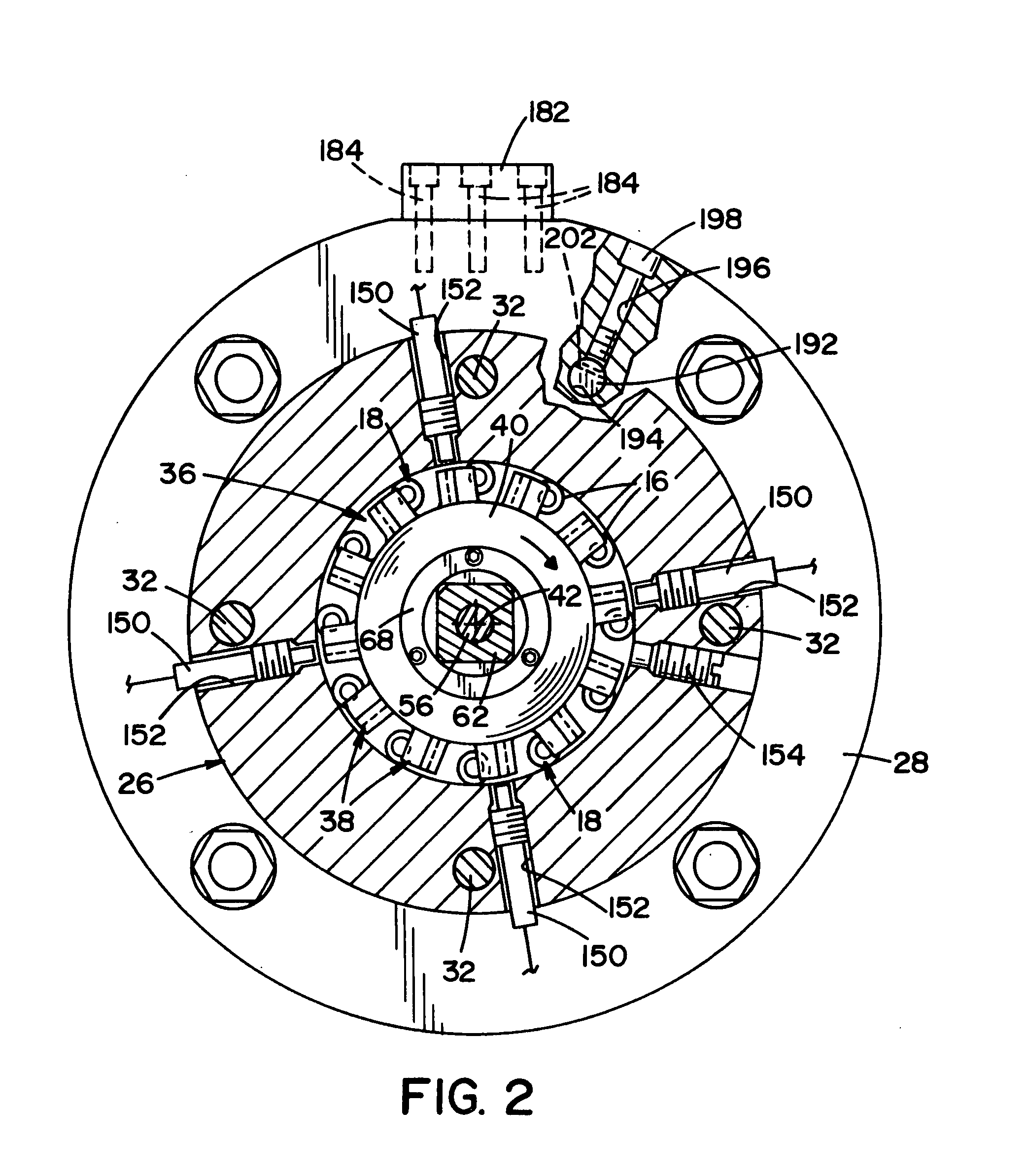Pulse wave modulator cutting assembly
a pulse wave modulator and cutting assembly technology, applied in the field of pulse wave modulator cutting assembly and cutting assembly, can solve the problems of significantly increasing manufacturing costs, low output, and more expensive processes such as pill manufacturing processes used to produce catalysts, and achieves improved cutting quality, reduced throughput, and increased production efficiency
- Summary
- Abstract
- Description
- Claims
- Application Information
AI Technical Summary
Benefits of technology
Problems solved by technology
Method used
Image
Examples
Embodiment Construction
[0029] With reference to FIG. 1, an auger 12 moves material to be extruded toward a die plate 14 having a plurality of die openings 16 that receive dies 18. The material will become an extruded catalyst; however, the cutting assembly can be used to cut many other types of extruded material. The auger 12 is of the type known in the art and can, for example, have a single flight configuration or a dual flight configuration. The auger 12 is housed in an auger housing 22 that defines a cylindrical opening 24 through which the material to be extruded travels. The die plate 14, in the depicted embodiment, is a circular plate having the plurality of die openings 16 formed through the plate. The dies 18 depicted in the figures are shown in only one configuration for the sake of clarity only. The dies 18 can take numerous configurations that are known in the art.
[0030] An annular spacer 26 attaches to an end of the auger housing 22 and an annular die holder 28 attaches to the annular spacer...
PUM
| Property | Measurement | Unit |
|---|---|---|
| length | aaaaa | aaaaa |
| pressure | aaaaa | aaaaa |
| velocity | aaaaa | aaaaa |
Abstract
Description
Claims
Application Information
 Login to View More
Login to View More - R&D
- Intellectual Property
- Life Sciences
- Materials
- Tech Scout
- Unparalleled Data Quality
- Higher Quality Content
- 60% Fewer Hallucinations
Browse by: Latest US Patents, China's latest patents, Technical Efficacy Thesaurus, Application Domain, Technology Topic, Popular Technical Reports.
© 2025 PatSnap. All rights reserved.Legal|Privacy policy|Modern Slavery Act Transparency Statement|Sitemap|About US| Contact US: help@patsnap.com



